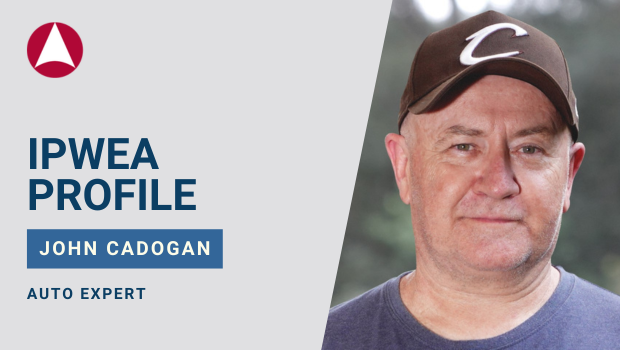Back in the days when John Cadogan was a television presenter and reporter on national current affairs programs, he would always be introduced as the “auto expert.”
As someone who believes that you don’t choose a career, it chooses you, this seemed to be just the right name when Cadogan left mainstream media behind and set up his own media channel.
“I thought ‘auto expert’ was a pretty catchy name, so I thought I’d go with that as it had been verified independently so many times,” he says.
Today, the Auto Expert YouTube channel has more than 400,000 subscribers and is Cadogan’s vehicle for his outspoken take on the automotive industry.
“I saw so many motoring journalists and outlets copying each other, so I thought I’d do a mad experiment which was about what a motoring journalist would do if he could say what he thought all the time,” says Cadogan.
“You don’t get to do that in too many commercial publishing gigs. So I wanted to come up with a business model that allowed me to tell the truth or what I think the truth is.”
An example of this Cadogan’s ‘2024 Lemon Vehicles List,” which has received 480,000 views.
In the video Cadogan surgically reviews the car brands for sale in Australia and, using the criteria that he is looking for reliable, well-made vehicles backed by reasonable service, he quickly reduces the list from more than 60 to around 18.
“I think there’s a huge gulf between the marketing fluff around new cars and the reality, and the sex appeal of new cars of how they look and how you think other people are going to think about you,” he says.
“What really matters to owners is how reliable is the product, and if it fails in some way will you get looked after or not, and this is seldom reported.”
As someone who has seen the evolution of the Australian car industry at first hand, Cadogan says there was a major “vacuum” created when Holden ended its manufacturing operation in 2017, and the subsequent exit of General Motors from the market.
“Other brands just rushed in, and Holden and GM disappeared surprisingly quickly,” he says.
“But the industry has always been in flux. I remember being a kid in the late 1960s when everyone in the neighbourhood drove Fords, Valiants, and Holdens, and if a Toyota Corolla came along people would be shouting.”
That has changed rapidly, and fast forward to around 2000 Toyota was a major player and in 2025 now dominates the market.
The Japanese success was followed by a wave of South Korean producers and more recently by manufacturers from China, who are also dominating EV sales.
These cycles are also shorter. The South Koreans achieved levels of quality and market penetration in around half the time it took for Japanese manufacturers, and Chinese manufacturers appear to be shortening the cycle again.
“I was in China in January and there was an incredible array of cars that I didn’t recognise and they were nearly all EVs,” says Cadogan.
“There were some very slick looking cars in China that we don’t see here in Australia yet.
“And I’d suggest that if it took Toyota 30 years to engineer mainstream acceptance in Australia, then it took the South Koreans about 15 years to do the same thing and I think it’s going to take the Chinese five to 10 years.”
The advent of more Chinese cars, he says, will have a significant impact in Australia, and will “upend the market” in terms of price and give consumers more choice.
Given that Australia is a comparatively small market, in global terms, with around one million new vehicles sold each year this could mean that many familiar brands, most likely from Europe, could disappear from Australian roads.
On the issue of EVs, Cadogan notes that Toyota has said that EVs may ultimately comprise around 30% of car sales globally.
“Toyota are not perfect, but they are seldom wrong on issues of this nature,” he says.
“This is a multi-decade process of electrification, so it’s going to take several decades for EVs to dominate in Australia even if sales really pick up.”
While sceptical that technologies such as hydrogen, which requires significant infrastructure, will gain much traction globally, and particularly in Australia, Cadogan is more positive about hybrid technology.
“I think the technology is brilliant,” he says.
“And if you wanted to make a real difference to the amount of CO2 being produced in a timely fashion the best thing to would be to make every car a hybrid, because there’s no charging infrastructure to worry about.
“There’s no huge additional cost, and you don’t have to worry about plugging in at home or any of that, you just save 20% on your fuel bill.”
Australia, he says, consumes about 20 billion litres of petrol a year, so 20% of that would be a saving of 4 billion litres.
So, what does a highly opinionated and experienced motoring journalist actually drive himself?
“I’ve got a Triton ute and a Santa Fe SUV,” Cadogan.
“I’m not driving either of these because I love them, I’m just driving them because they are pragmatic and practical.”
“The thing about being a motoring journalist for 30 years is that it prevents you from falling in love with a car, and if someone asked me if I wanted a Porsche 911 tomorrow, I’d probably say ‘not really’.”














